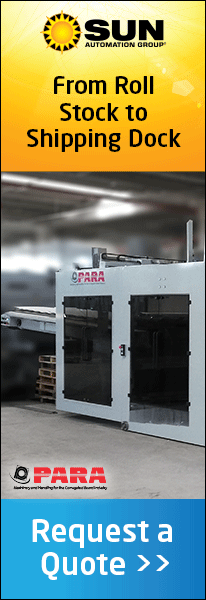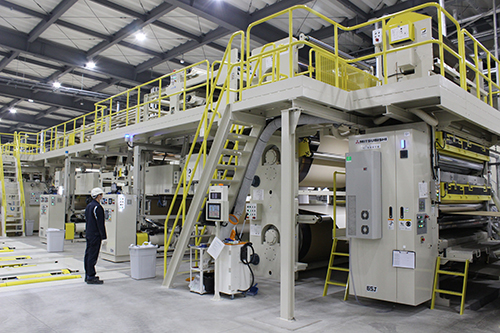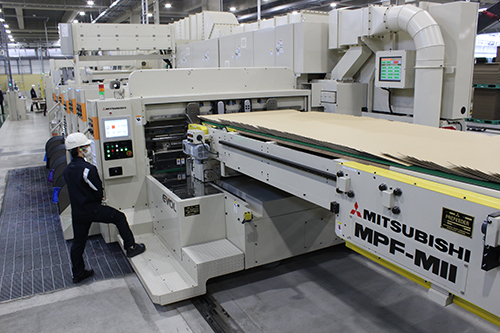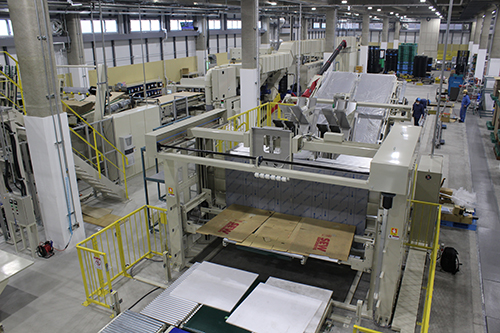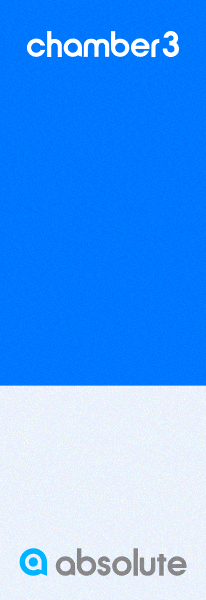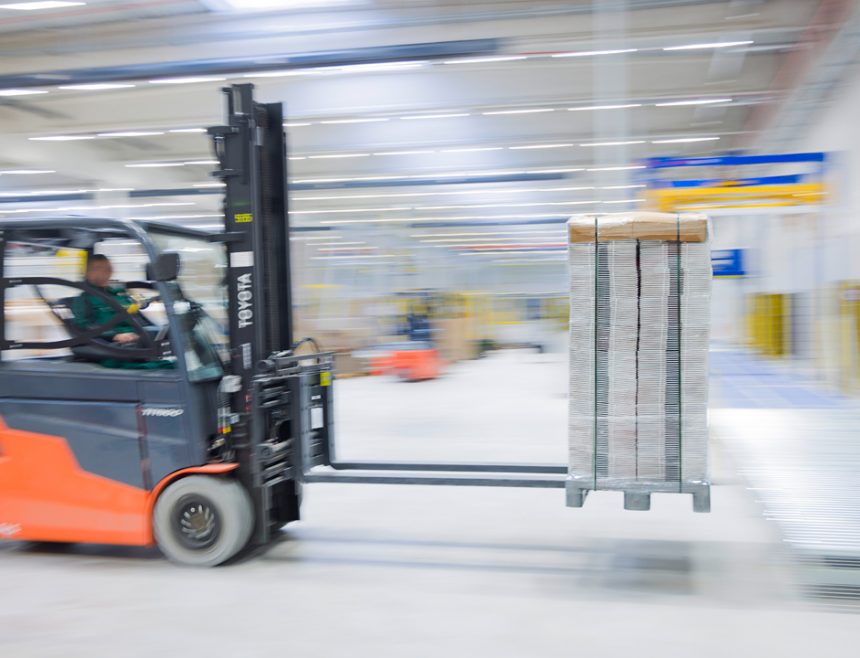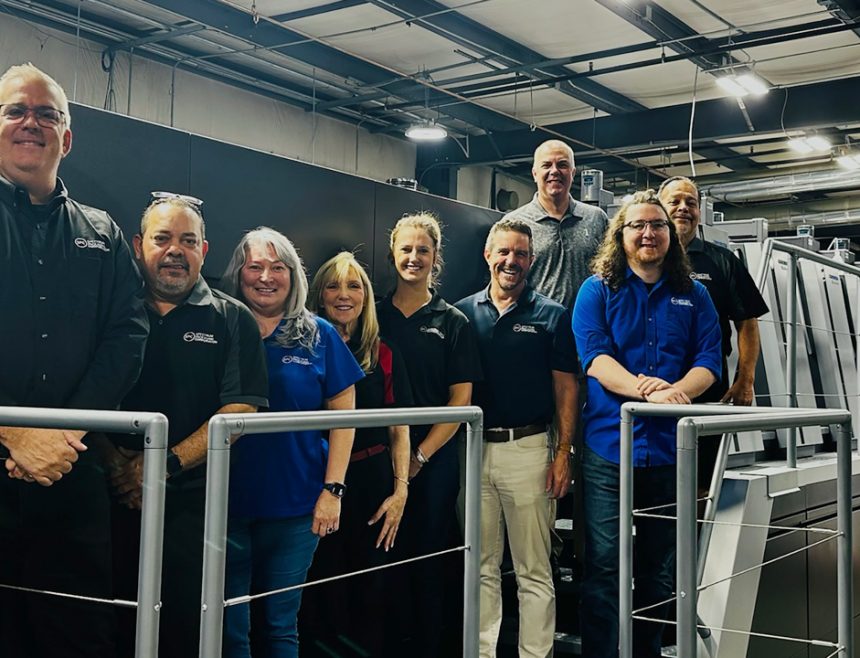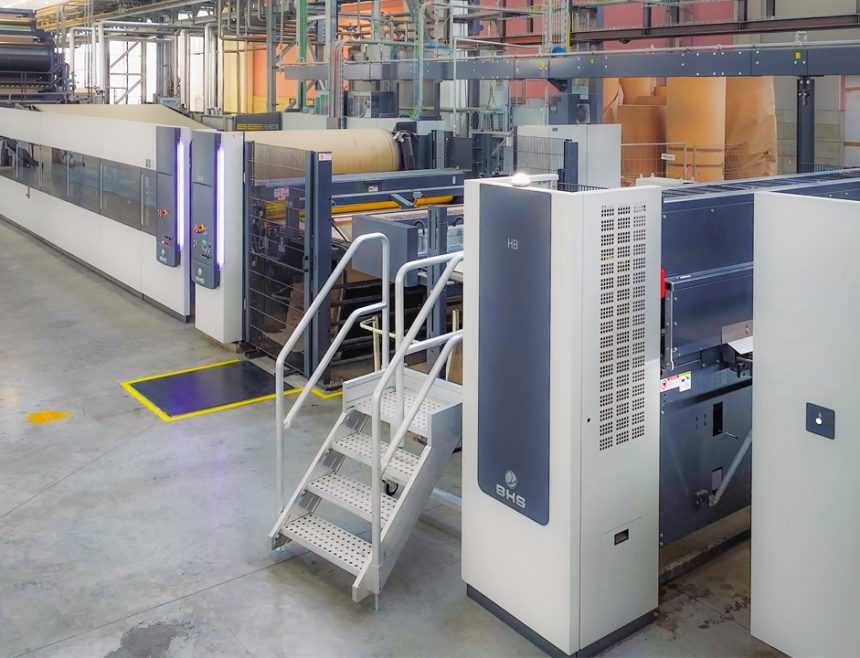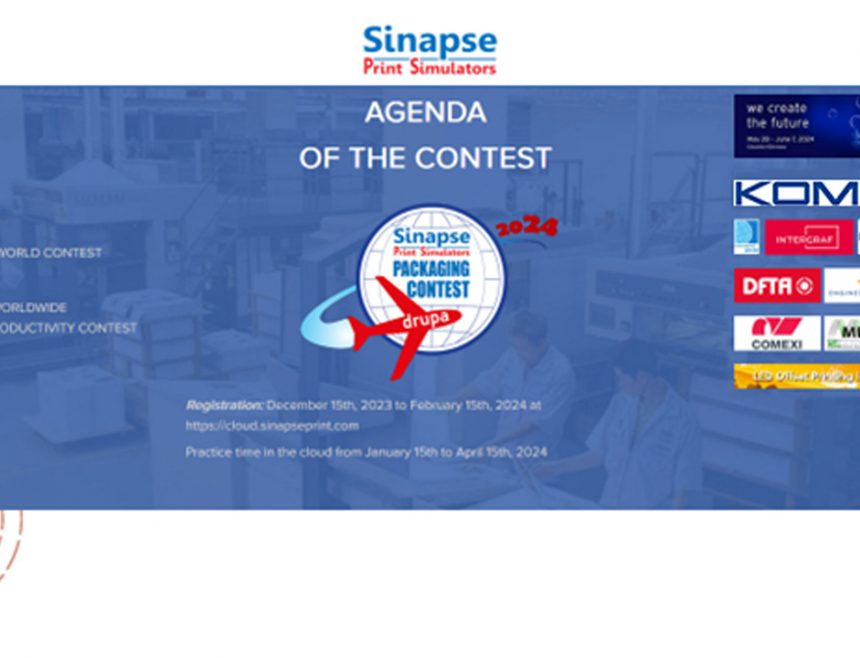Misuzu Shigyo recently completed a fast-track one-year project to re-equip and upgrade its corrugating and converting plant in Osaka, installing a high performance Mitsubishi H300-2200R corrugator and two EVOL flexo folder gluers from Mitsubishi Heavy Industries Machinery Systems Ltd (MHI-MS).
The ambitious scheme has involved expanding the plant’s production capacity by 40% while reducing operating time by two hours daily (from 10 to eight hours), as part of energy-saving plans and efforts to reduce carbon emissions.
“We have completely renewed our whole factory. We started in October 2021 and completed it last October; it was a complete rebuild,” said Shuichi Miki, President, Misuzu Shigyo (pictured below). “We wanted to expand our production capacity and increase the quality of our board, so we chose the Mitsubishi H300-2200R corrugator.”
He continues, “We know that MHI-MS has different corrugator models, but a 300 mpm machine is suitable for us, while a 450 mpm model is too fast. Also, a 2.2m model is suitable for our business model, as it offers production efficiency, low paper wastage and quick operation. This is the best-fit machine for our business.”
MHI-MS was able to accommodate Misuzu Shigyo’s request for a speedy installation schedule to minimise lost production while existing equipment was being replaced. The Mitsubishi H-300-2200R corrugator, fitted with MHI’s latest Sigma 3000 automatic production control system, was installed in June 2022, in time for Misuzu Shigyo to re-open its Osaka plant four months later.
MHI’s H-300-2200R is highly optimised to ensure stable production and is designed for independent companies looking for flexibility and stability in mechanical operations. Equipped with a single cut-off and single stacker, MHI’s H-300-2200R is a popular corrugator specification in Japan, where many manufacturers have a lot of short orders to complete and short delivery times to fullfil.
Fulfilling such demanding customer requirements means that the double cut-off and double stacker production set-up that is popular in some other countries, is unsuitable for Just-In-Time production conditions in most Japanese corrugating plants.
“We had a different corrugator before this, which was also supplied from Mitsubishi. We were satisfied with the machine and MHI-MS’s service, so we decided to continue using a Mitsubishi corrugator,” Miki said.
To streamline corrugator operations, Misuzu Shigyo has installed a fully automated Go-Rider paper roll handling system supplied by Godo of Tokyo. The Go-Rider system reduces manpower requirements, Miki noted, by automatically selecting and conveying paper rolls of a specified paper flute or grammage for installation on the company’s H300-2200R corrugator.
Working a single shift-day, with 2-3 hours of additional overtime, Misuzu Shigyo’s re-equipped plant produces from 3 to 3.5 million sqm of corrugated board per month.
“Our previous equipment was capable of producing three million sqm per month, but now we can produce more, so we are thinking to expand production,” Miki said. “Our new corrugator can produce five million sqm monthly, but we are limited by factory working hour restrictions in our urban residential area location, which means we cannot work 24 hours a day.”
He adds, “We are aiming to increase our board production to four million sqm a month. Because we are located in a residential area, we are focusing with our new Mitsubishi equipment on quiet machine operations, and quick production and delivery.”
Long History
Established in 1946 by Miki’s father and brother, Misuzu Shigyo first traded corrugated boxes before establishing its HQ and Osaka plant which is located between Osaka and Kyoto, and its Tokyo plant in Sagamihara in Kanagawa Prefecture. Misuzu Shigyo’s Osaka plant supplies customers located within a 100 km radius of the plant, including customers in Okayama.
“Our supply radius is bigger than before,” Miki remarked. “Independent box companies usually supply within a 50km radius, but we supply more widely than is usual for two reasons. We have tried to find customers in new areas – these customers are satisfied and introduced other nearby customers. The other reason is that we focus on supplying boxes more than sheets – some of our customers have established new satellite factories, and so we have developed a wider area of coverage.”
Converting Too
To match its Mitsubishi H-300-2200R corrugator investment with upgraded high quality box production and increased capacity, Misuzu Shigyo has installed two EVOL flexo folder gluers equipped with MHI Pre-feeder. The 4-colour EVOL-84 was the first of the company’s two EVOLs to start up, followed by the 4-colour EVOL-125 at the end of December.
“We will try to increase our box production; that’s why we bought a second EVOL,” Miki said. “We supply 70% of our sheets to our own converting lines and 30% we sell to the market. Singlewall board accounts for about 90% of our sheet production and doublewall sheets are around 10% of our output. Doublewall is used to make fruit trays and similar boxes to hold heavier items.”
Singlewall sheets are made using A, B, C and E flute, while the doublewall board is mostly AB and BE flute. In terms of grammage, the heaviest liner used is 280gsm and the heaviest fluting is 200gsm for fruit and vegetable boxes to protect the contents. The lightest liner used is 130gsm and the lightest fluting is 120gsm, used mainly for home delivery packaging.
Changing Demand
“Many of our boxes are for packing fruit and vegetables while e-commerce accounts for seven percent of our production volume,” Miki said. “In 2021, our production volume increased by three percent, while in 2022 during the first three quarters to September there was no change, so COVID-19 has not had a big effect on our business. People stayed at home during the pandemic, so demand for boxes to fill with souvenir confectionery products usually bought by domestic and foreign tourists fell, but sales of boxes to pack face masks grew.”
Production specifications for some corrugated boxes have begun to change recently as customers develop more sustainable packing solutions. “A recent trend is for some customers to change absorbers made of polystyrene in their boxes to cardboard as the focus on sustainability grows,” Miki said. “This is particularly the case for packing of mechanical parts.”
In addition, Japan’s corrugated industry as a whole is trying to reduce the total weight of boxes used for packaging by using lighter weight liner and fluting, noted Miki. Liner use, for example, is being reduced from 180 to 170gsm, while fluting use is reducing from 120 to 115gsm.
Reducing Carbon Emissions
Misuzu Shigyo has used its factory upgrade to increase energy saving and sustainable operations. The company has installed 1,070 solar power panels on the factory’s roof which provides one third of the plant’s electricity consumption needs.
“Introducing solar power has reduced our energy consumption. For the other two thirds of our electricity use we require the power company to supply us with CO2-free electricity,” Miki said. “We also introduced PH neutralizing system for waste water utilizing CO2 exhausting from the boiler for corrugator. In addition, we are focusing on production time; previously we worked 10 hours daily, but now our new machinery works eight hours a day, so that creates energy saving as well.”


